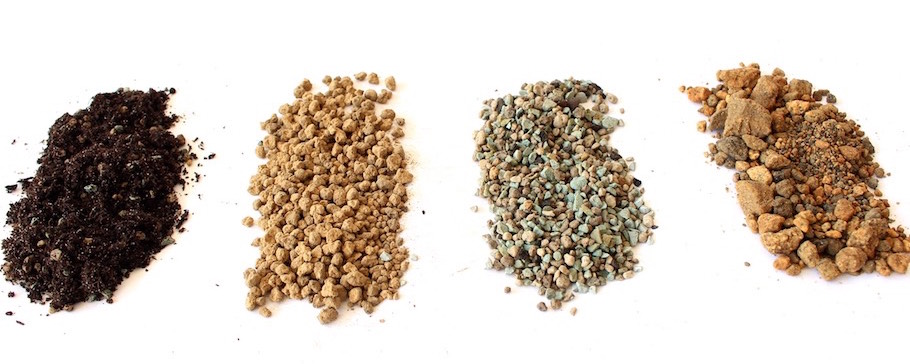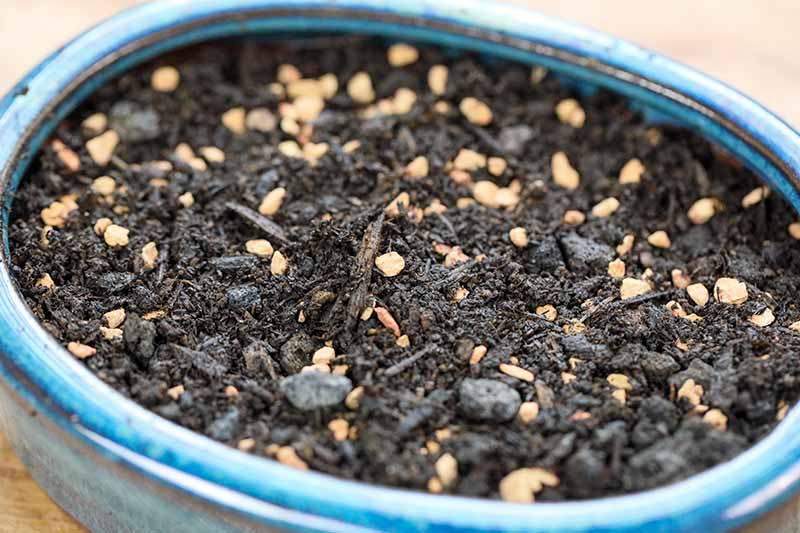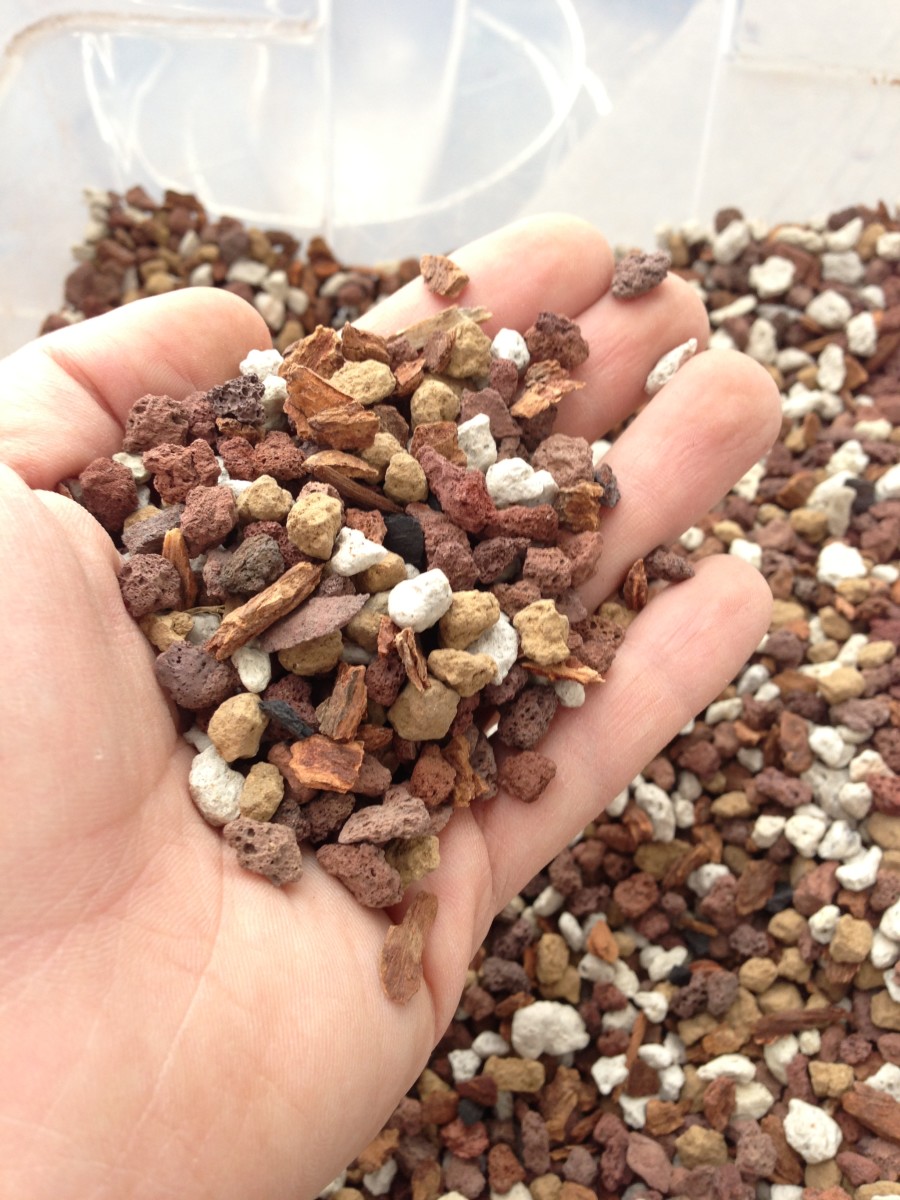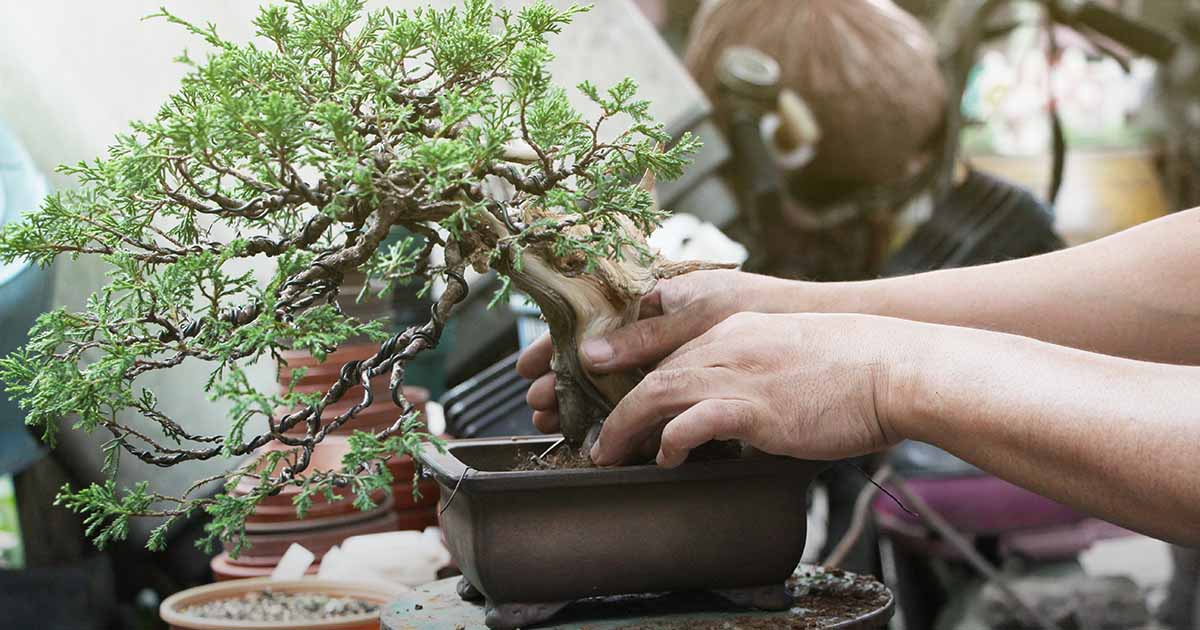In the following paragraphs, we will check out the different sorts of soil and substrates Utilized in bonsai cultivation, which includes organic and inorganic solutions.
We are going to also find out advised soil mixtures for numerous bonsai species, which include deciduous, coniferous, and indoor kinds. From akadama and pumice to moss and river sand, we'll dive into your intriguing globe of bonsai soil and assist you to understand why It is really a very important Portion of cultivating these exquisite trees.

Bonsai soil
What is bonsai soil?
Bonsai soil is a specialized type of soil that is specifically formulated for growing and maintaining bonsai trees. Unlike regular garden soil, bonsai soil is well-draining and provides the necessary nutrients and moisture balance for the tree's root system. The composition of bonsai soil is carefully designed to meet the unique needs of bonsai trees, ensuring their health and longevity.
The importance of bonsai soil
The choice of soil plays a crucial role in the success of your bonsai tree. The right soil provides optimal drainage, allowing excess water to flow freely and preventing root rot. It also promotes a healthy and well-developed root system, which is essential for the overall health and growth of the tree. Bonsai soil retains moisture while allowing air to reach the roots, striking the perfect balance for the tree's needs. Choosing the right bonsai soil is essential for maintaining a healthy and thriving bonsai tree.
Bonsai substrates
What are bonsai substrates?
Bonsai substrates refer to the different materials that can be used to create the ideal soil composition for bonsai trees. These substrates are carefully chosen to meet the specific needs of different species of bonsai trees and to ensure proper water drainage and nutrient availability.
Different types of bonsai substrates
There are various types of bonsai substrates available, each with its own unique characteristics and benefits. Some common bonsai substrates include:
- Organic materials: These include ingredients such as bark, peat moss, and coconut coir. Organic substrates help retain moisture and provide essential nutrients to the bonsai tree.
- Inorganic components: These consist of parts like pumice, lava rock, and akadama. Inorganic substrates give exceptional drainage, ensuring that surplus water won't accumulate across the roots of your bonsai tree.
- Soil amendments: These are typically substances which can be included on the soil combination to boost its properties. Samples of soil amendments consist of perlite, vermiculite, and sand. They Enhance the soil's aeration, h2o-holding ability, and nutrient availability.
By understanding the different sorts of bonsai substrates as well as their Qualities, you may choose the most suitable just one for the bonsai tree's desires.
Organic or Inorganic Soils
Natural and organic soils for bonsai
Organic soils for bonsai are composed of pure materials for example bark, peat moss, coconut coir, and compost. These elements provide a prosperous supply of nutrients with the bonsai tree and market nutritious root development. Natural soils also have very good h2o retention Attributes, ensuring that the tree receives ample humidity concerning watering sessions. Nonetheless, it is important to notice that natural and organic soils may perhaps stop working as time passes and turn into compacted, resulting in lousy drainage and opportunity root issues.
Inorganic soils for bonsai
Inorganic soils for bonsai consist of supplies like pumice, lava rock, akadama, and soil amendments like perlite or vermiculite. These supplies have superb drainage Qualities, preventing waterlogged soil and advertising aeration across the roots. Inorganic soils are desired by several bonsai fans due to their longevity and talent to offer a stable setting to the bonsai tree's root technique. On the other hand, They might call for far more Regular watering and additional fertilization, as they do not keep just as much dampness or nutrients as organic soils.
Advantages and drawbacks of applying organic and natural and inorganic soils for bonsai
Choosing between natural and inorganic soils for your personal bonsai tree depends on many factors, including the distinct species of tree, your weather, and personal preferences. Here's the advantages and drawbacks of each:
Natural and organic soils:
- Pros: Offer nutrients, very good water retention, promote nutritious root progress.
- Cons: May well stop working with time, possible for inadequate drainage if not adequately taken care of.
Inorganic soils:
- Pros: Outstanding drainage, extensive-Long lasting, stable atmosphere for roots.
- Negatives: Less water retention, may well require much more frequent watering and fertilization.
By thinking about the advantages and drawbacks of both of those natural and organic and inorganic soils, you can also make an informed selection based on the specific requirements of the bonsai tree.
Soil elements
Crucial components of bonsai soil
Bonsai soil is typically composed of three major factors: grit, natural subject, and clay. These elements operate together to create The best soil structure for your bonsai tree's root method.
- Grit: Grit, which include sand or perlite, presents drainage and aeration during the soil. It helps protect against waterlogging and lets air to reach the roots.
- Organic matter: Natural matter, for instance compost or bark, gives nutrients to your bonsai tree. In addition, it aids retain dampness and improve the soil's Total framework.
- Clay: Clay particles present some water retention features and help bind the soil with each other. On the other hand, an excessive amount of clay may lead to bad drainage and compaction.
Function of each soil ingredient
Each soil ingredient plays a significant position in making a well-balanced and healthy ecosystem for the bonsai tree's roots.
- Grit: Grit supplies the mandatory drainage and aeration in the soil. It prevents the roots from sitting in stagnant h2o, lowering the potential risk of root rot and advertising and marketing In general root wellbeing.
- Natural and organic subject: Organic and natural make a difference provides vital nutrients on the bonsai tree. It aids in dampness retention and contributes to the general framework of your soil.
- Clay: Clay particles assist bind the soil together and supply some water retention ability. Nevertheless, it is vital to equilibrium the amount of clay to prevent challenges like very poor drainage and compaction.
By comprehending the roles of every soil part, you could produce a balanced bonsai soil combine that satisfies the particular requires within your tree.

Recommended Bonsai soil mixtures
Common bonsai soil mixtures
There are several common bonsai soil mixtures that have been proven effective for various types of bonsai trees. These mixtures typically consist of a combination of inorganic substrates, organic matter, and soil amendments.
Some of the commonly used bonsai soil mixtures include:
- Akadama, pumice, and lava rock: This mixture is popular among bonsai enthusiasts for its excellent drainage and water retention properties.
- Akadama, lava rock, and natural matter: This mixture combines the key benefits of inorganic substrates While using the nutrient-abundant Homes of organic and natural make any difference.
- Pumice, perlite, and bark: This combination delivers very good drainage and aeration when retaining some moisture and delivering nutrients.
They are just some samples of bonsai soil mixtures, and The perfect combination will depend upon the precise requires of your bonsai tree plus your local climate.
Components to think about when selecting a bonsai soil combination
When picking a bonsai soil combination, it is vital to look at the next things:
- Species of bonsai tree: Distinctive species have different humidity and nutrient needs. Investigation the precise requirements of one's tree to pick a soil combination that satisfies its specifications.
- Local climate: The weather you live in can have an affect on the humidity retention Houses of your soil. Look at the regular humidity and temperature close to you When selecting a soil mixture.
- Watering patterns: Your individual watering patterns and regimen ought to align While using the soil combination you select. Some mixtures demand more frequent watering, while others retain dampness for for a longer time intervals.
- Finances: Some soil elements may be costlier than Other folks. Think about your spending budget when choosing a soil combination.
By having these variables into account, you could go with a bonsai soil combination that provides the best expanding situations for the tree.
Deciduous Bonsai soil
Ideal soil composition for deciduous bonsai
Deciduous bonsai trees, including maple or birch, have certain soil specifications to help their expansion and well being. The most effective soil composition for deciduous bonsai commonly includes a combination of organic and natural subject, inorganic substrates, and soil amendments.
A suggested soil composition for deciduous bonsai could incorporate:
- Akadama: Presents excellent water retention though allowing for drainage. Additionally, it releases nutrients slowly and gradually after a while.
- Pumice: Promotes aeration and drainage within the soil, preventing waterlogging.
- Bark or peat moss: Provides natural matter to your soil, delivering nutrients and dampness retention.
This soil composition makes certain that the roots of deciduous bonsai trees get the best balance of humidity, nutrients, and oxygen for optimum advancement.

Coniferous and Pine soil
Ideal soil mixture for coniferous and pine bonsai
Coniferous and pine bonsai trees have specific soil requirements due to their water retention needs and preference for acidic soil. An ideal soil mixture for coniferous and pine bonsai should provide good drainage while retaining moisture and maintaining the desired pH level.
A recommended soil mixture for coniferous and pine bonsai may include:
- Akadama: Provides excellent water retention while allowing for sufficient drainage. It releases nutrients slowly over time.
- Pumice: Promotes aeration and drainage while in the soil, avoiding waterlogged roots.
- Peat moss: Adds organic matter and acidity on the soil, making an excellent pH level for coniferous and pine trees.
This soil mixture ensures that the roots of coniferous and pine bonsai trees get the correct harmony of moisture, nutrients, and acidity for his or her particular demands.
Akadama
Exactly what is akadama?
Akadama is actually a sort of clay soil which is commonly Utilized in bonsai cultivation. It's recognized for its superb drinking water retention Attributes, which make sure a steady supply of moisture to your bonsai tree's roots. Akadama can be prized for its power to release nutrients little by little over time, delivering a consistent supply of nourishment for that tree.
Great things about utilizing akadama in bonsai soil
Working with akadama in bonsai soil presents various Added benefits:
- Drinking water retention: Akadama has exceptional water retention Homes, permitting it to hold moisture with out getting to be waterlogged. This makes sure that the bonsai tree's roots get a steady supply of water, advertising healthier progress.
- Nutrient release: Akadama slowly and gradually releases nutrients into your soil eventually, providing a consistent source of nourishment for your bonsai tree. This minimizes the necessity for Repeated fertilization and allows sustain a well balanced nutrient profile.
- Aeration: In spite of its water retention abilities, akadama also presents satisfactory aeration to your bonsai tree's roots. It lets air to reach the root system, protecting against troubles including root rot on account of lack of oxygen.
By incorporating akadama in to the bonsai soil, you are able to build an optimum developing atmosphere for your tree, guaranteeing its health and vitality.

Lava rock
How lava rock benefits bonsai soil
Lava rock is a popular component in bonsai soil mixtures due to its excellent drainage and aeration properties. It is typically used in conjunction with other substrates to create the ideal soil composition for bonsai trees.
The benefits of lava rock in bonsai soil include:
- Drainage: Lava rock provides excellent drainage, preventing waterlogging and ensuring that excess water flows freely through the soil. This helps prevent root rot and provides a healthy environment for the roots to thrive.
- Aeration: The porous nature of lava rock lets air to circulate within the soil, furnishing oxygen to the bonsai tree's root procedure. Appropriate aeration is crucial for healthier root development and Total tree growth.
- Longevity: Lava rock can be a durable content that doesn't stop working simply. This makes certain that the soil construction continues to be stable eventually, cutting down the necessity for Repeated soil replacements.
Lava rock is available in several measurements and styles, making it possible for for personalisation according to the particular desires within your bonsai tree and soil necessities.
Different types of lava rock
You can find differing kinds of lava rock that can be used in bonsai soil mixtures, like:
- Black lava rock: Black lava rock is often a generally applied material in bonsai soil mixtures. It offers outstanding drainage properties and provides an aesthetic ingredient to the general presentation of your bonsai tree.
- Red lava rock: Pink lava rock is an additional well-known choice in bonsai soil mixtures. It provides similar drainage and aeration Advantages as black lava rock but has a definite reddish shade that adds Visible curiosity towards the container.
Both of those black and crimson lava rocks are commonly out there and can be conveniently incorporated into your bonsai soil mixture.
Potting
Essential guidelines for successful bonsai potting
Potting can be a critical procedure in bonsai cultivation, because it specifically impacts the health and progress of your tree's roots. Here are several crucial strategies for prosperous bonsai potting:
- Select the correct pot dimension: Pick a bonsai pot that allows for root progress even though nevertheless providing a snug healthy. Avoid pots which have been too massive, as they may result in extreme soil moisture and bad root improvement.
- Use bonsai wire: Secure the tree in the pot applying bonsai wire to guarantee balance. This stops the tree from shifting or turning out to be uprooted during watering or sturdy winds.
- Trim and spread the roots: Right before potting the bonsai tree, cautiously trim and distribute out the roots. This encourages outward progress and stops root tangling or root-certain challenges.
- Add mesh screens: Location mesh screens more than the drainage holes at The underside of your pot to stop soil erosion and assure right drainage.
- Use refreshing bonsai soil: When potting, often use new bonsai soil to deliver the mandatory nutrients and best growing problems with the roots.
By subsequent these essential guidelines, it is possible to ensure a successful potting course of action and advertise the general health and fitness and progress of your respective bonsai tree.
The role of bonsai pots in soil moisture control
Bonsai pots Perform a vital part in soil dampness Command, straight impacting the wellbeing and progress of the tree. Bonsai pots are generally shallow and possess drainage holes, permitting extra drinking water to flee and blocking the soil from getting waterlogged.
The look of bonsai pots encourages evaporation and air circulation, which helps control soil moisture concentrations. The shallow depth and broad opening of your pot expose far more surface area location in the soil for the air, aiding in moisture evaporation. This stops the roots from sitting in excessively damp soil, lowering the chance of root rot and also other drinking water-similar problems.
In addition, the drainage holes in bonsai pots let any surplus drinking water to flee, preventing waterlogged soil and advertising and marketing aeration across the roots. Right aeration is essential for the health and fitness and enhancement of the basis system, ensuring the bonsai tree gets the necessary oxygen for advancement.
By making use of bonsai pots created for powerful humidity Manage, you can create a favorable surroundings for your personal bonsai tree's roots and advertise its General wellbeing and vitality.
In conclusion, picking out the suitable bonsai soil is important for the results and wellbeing of your respective bonsai tree. Being familiar with the different types of bonsai substrates, the role of natural and inorganic soils, the key factors of bonsai soil, and the various suggested soil mixtures will help you present the exceptional rising problems for the bonsai tree. No matter if you've got a deciduous or coniferous bonsai, incorporating supplies like akadama and lava rock can enhance the soil's drainage and nutrient availability. On top of that, taking note of potting strategies and employing bonsai pots suitable for humidity Handle will further more assist the thriving expansion of your respective bonsai tree. With good understanding and click here implementation of bonsai soil practices, it is possible get more info to benefit from the magnificence and artistry of bonsai cultivation For a long time to come back.
